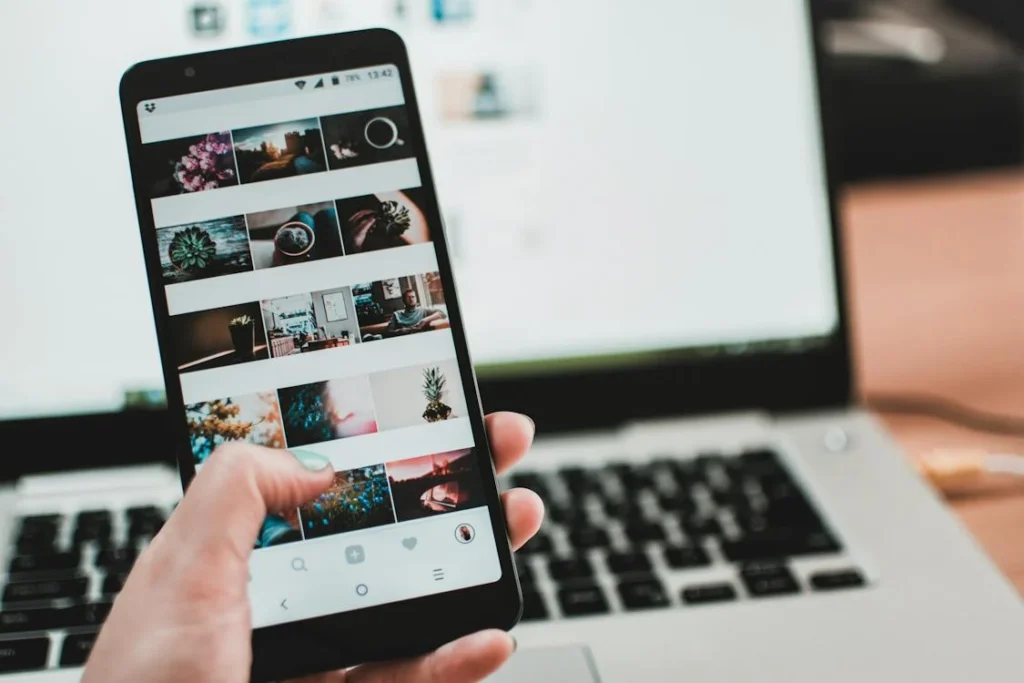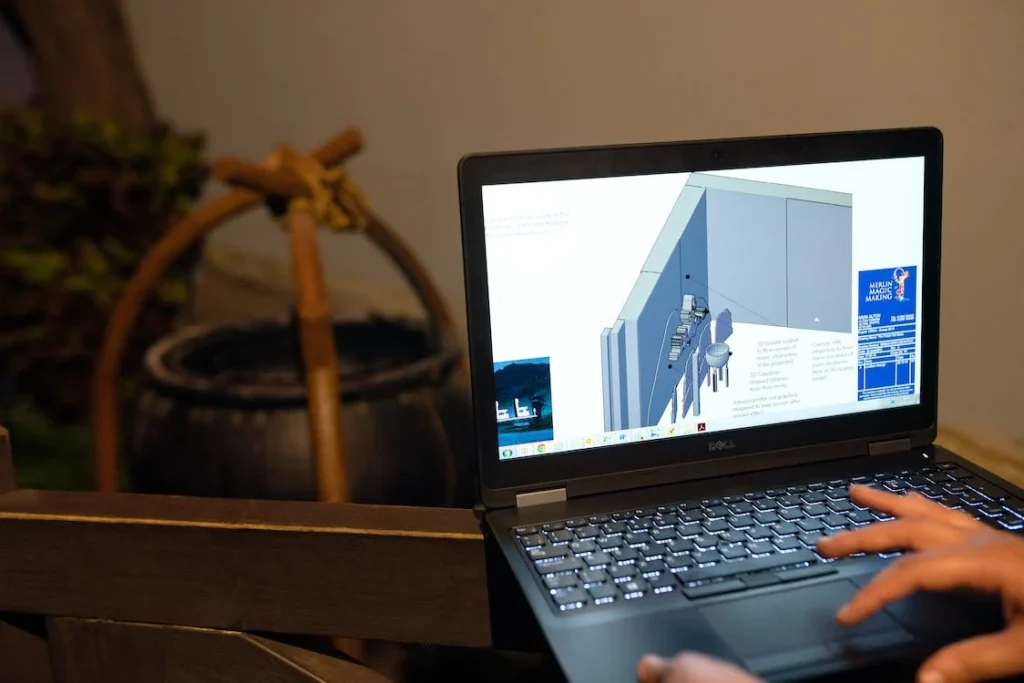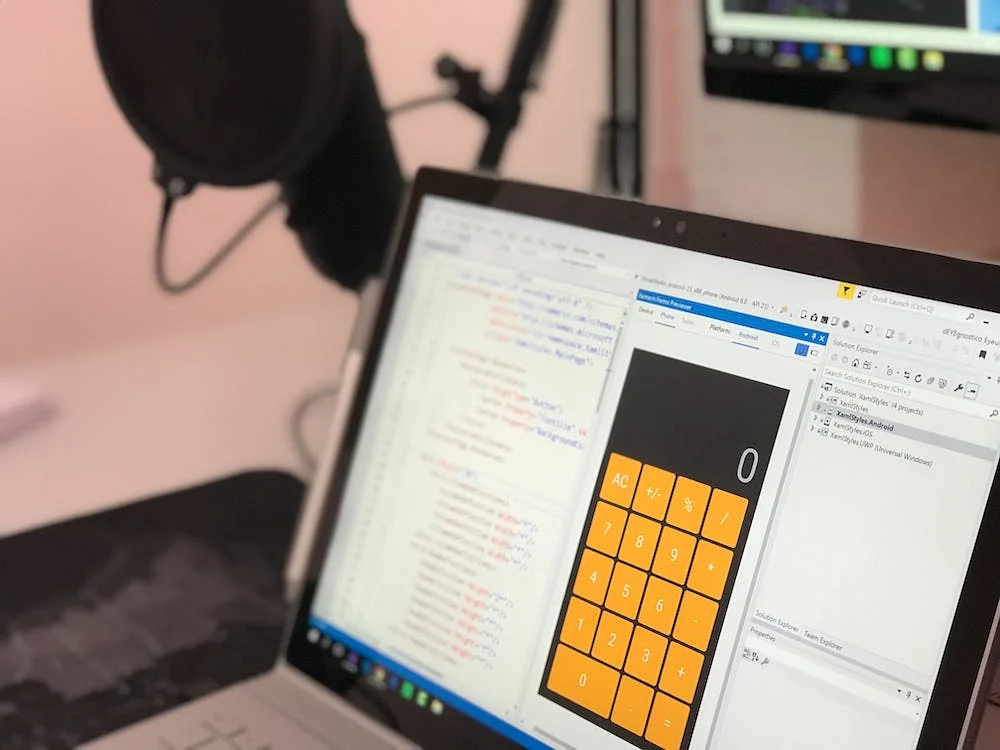Hello there! Managing human resources effectively is crucial for any organization’s success, but it can be a daunting task. From hiring the right talent to retaining employees and ensuring their satisfaction, HR management involves a multitude of responsibilities. Luckily, advancements in AI technology have brought predictive tools to the forefront, transforming how HR departments operate. These tools can help predict employee performance, turnover, and even identify the best candidates for your team. In this article, we’ll explore how AI can enhance HR management, providing actionable insights and strategies that you can implement in your organization. Ready to dive in? Let’s get started!
Understanding AI in HR Management
The Role of AI in HR
Artificial Intelligence (AI) is dramatically transforming HR management by automating repetitive tasks, providing data-driven insights, and enhancing decision-making processes. For startup founders, integrating AI into HR operations can lead to significant efficiency gains and better strategic outcomes.
AI tools can analyze vast amounts of data quickly and accurately, identifying patterns and trends that might be missed by human analysts. This capability is particularly valuable in HR, where making informed decisions about hiring, performance management, and employee retention can directly impact the success of the business.
Why AI is Important in HR
The importance of AI in HR cannot be overstated, especially for startups that need to scale quickly and efficiently. Incorporating AI into HR processes helps improve the accuracy of hiring decisions by thoroughly analyzing candidate data. This not only saves time but also reduces the risk of bad hires, which can be costly and disruptive.
AI also plays a crucial role in predicting employee turnover, allowing companies to proactively address potential issues and retain top talent. Additionally, AI-driven tools can enhance employee engagement by identifying the factors that contribute to job satisfaction and performance, thereby fostering a more productive and motivated workforce.
Strategic Benefits of AI in HR
For startup founders, the strategic benefits of AI in HR are manifold. AI enables more effective resource allocation by identifying the best candidates quickly and reducing the time-to-hire. This is crucial for startups that need to build teams rapidly to support growth.
AI also helps create more accurate and dynamic workforce planning models, allowing startups to forecast their hiring needs and adjust their recruitment strategies in real time. This adaptability is essential in the fast-paced startup environment where business needs can change rapidly.
Enhancing Talent Acquisition with AI
AI-powered tools can significantly enhance the talent acquisition process by automating the initial screening of resumes and identifying the most qualified candidates based on predefined criteria.
These tools can also analyze a candidate’s social media profiles and other online activity to assess their fit with the company culture. By leveraging AI, startups can streamline their recruitment process, reduce bias, and ensure they are considering the best candidates.
For instance, AI-driven platforms can use natural language processing (NLP) to analyze resumes and match them against job descriptions. This ensures that only the most relevant candidates are shortlisted, saving valuable time for HR professionals.
Additionally, AI can conduct preliminary interviews using chatbots, providing a seamless and efficient candidate experience while gathering critical information for further evaluation.

Recruiters may improve the candidate experience with the use of Textio, an AI-powered augmented writing tool, by using its extensive data-driven inclusion advice to craft better job descriptions, social media postings, and emails.
Recruiters can observe the exact impact their communications have on diverse audiences with Textio’s real-time bias detection.
Inclusion of information regarding the organization’s efforts to ensure that all applicants, including those with special needs, have equal access to the application process and the workplace helps to combat ableism.
It also highlights particular expressions that can offend some prospective employees and provides recruiters with an age graph that illustrates how their writing will appeal to various age groups.
Additionally, Textio’s sophisticated language insights notify recruiters when they use offensive language in their recruiting emails and job listings.
In addition to providing materials to educate recruiters, it also highlights hazardous words and phrases based on context.

AI-driven predictive tools are revolutionizing talent acquisition, particularly in startups where speed and efficiency are crucial.
Leveraging NLP-based resume screening, startups can quickly sift through large volumes of applications to identify the best candidates.
These tools analyze resumes for specific keywords, skills, and experiences that match the job description, streamlining the process and significantly reducing time-to-hire.
Instead of relying on manual sorting, AI ensures that no potentially qualified candidates are overlooked due to human bias or error.
Predictive candidate assessments also enhance hiring accuracy. These tools use AI to analyze experience and a candidate’s potential for future success in a role.
By evaluating factors like behavioral data, cognitive ability, and soft skills, AI can predict a candidate’s fit within the company culture and their likelihood of long-term success.
For startups that need to make quick, high-impact hires, this reduces the risk of poor hiring decisions that can slow down growth.
Real-world examples of this include startups using platforms like HireVue and Pymetrics, which incorporate AI-driven assessments and video analysis to evaluate candidates.
These tools allow startups to scale their hiring process while maintaining accuracy and fairness, ultimately reducing turnover and building more robust teams faster.

AI-driven predictive tools are game-changers in the talent acquisition process, especially for startups that thrive on speed and precision.
At MyTurn, we’ve implemented AI tools like NLP-based resume screening and predictive assessments to take our hiring game to the next level.
One example is a cybersecurity startup we partnered with, where time-to-hire was a critical factor.
By using AI-powered NLP tools, we were able to scan thousands of resumes in minutes, pinpointing the right candidates based on highly specific skills, even in cases where traditional resume formats wouldn’t make these skills immediately visible.
It wasn’t just about keyword matching instead it was about understanding the context of a candidate’s experience.
We also introduced predictive assessments that analyzed not just a candidate’s technical abilities, but their behavioral tendencies and cultural fit.
For example, in a high-stakes cybersecurity role, adaptability and decision-making under pressure are just as crucial as technical expertise. The AI assessments helped us identify those “soft skills,” cutting down the interview rounds significantly and reducing our time-to-hire by nearly 40%.
These AI tools didn’t just speed things up, they improved hiring accuracy by matching candidates who weren’t just good on paper but were the right fit for the long haul.
For startups, that’s invaluable. You get the right people on board, fast, without compromising quality.
Predictive Analytics for Employee Retention
Employee retention is a major challenge for startups, which often operate in highly competitive talent markets. AI can help predict which employees are at risk of leaving by analyzing various data points such as engagement survey results, performance reviews, and attendance records. By identifying the factors that contribute to employee turnover, startups can develop targeted retention strategies to address these issues proactively.
For example, if AI analysis reveals that employees who lack career development opportunities are more likely to leave, the startup can implement comprehensive career development programs to enhance retention. AI can also help personalize these programs by identifying the specific needs and aspirations of each employee, thereby increasing their effectiveness.

Predictive analytics in HR can significantly impact employee retention by using AI to analyze patterns and behaviors that indicate potential turnover.
These tools assess various data points, such as employee engagement scores, performance metrics, and even social network analysis within the company, to identify at-risk employees.
Startups can leverage AI by integrating these predictive tools into their HR systems to monitor employee sentiment and performance in real-time. This proactive approach allows them to address issues before they lead to turnover.
For example, if the analytics show a dip in engagement levels, the company can implement targeted interventions, such as personalized development programs or mentorship opportunities, to re-engage those employees.
A notable case study involves a tech startup that used AI-driven analytics to predict turnover risk among their software developers.
By identifying key factors like workload and work-life balance, they were able to implement flexible scheduling and professional development initiatives, which resulted in a 20% reduction in turnover over a year.

Predictive analytics tools can look at lots of data—like employee surveys, performance scores, and even attendance—to find patterns that suggest someone might be thinking about leaving. For example, I worked with a company where our AI model analyzed lower engagement scores (less interest in work) and more sick days than usual.
With around 85% accuracy, this model could predict which employees might quit in the next six months. With this info, the HR team could step in early, offering extra support or career talks before those employees start looking for other jobs.
Knowing who might leave is only half the battle; it’s also about figuring out why they’re considering it. AI can help by looking at employee surveys or comments feedback to pinpoint common complaints.
For example, at a startup I worked with, the AI identified that many employees felt they lacked opportunities to grow. In response, the company set up a mentorship program and reduced turnover by 30% among their newer team members within a year.
Not all employees have the exact needs. Some might be focused on career growth, while others care more about work-life balance. AI tools can help by grouping employees based on what’s most important to them. For instance, one company I worked with found that younger staff wanted career advancement while older staff valued flexible hours.
By offering different perks to each group, like training workshops for the younger team and flexible schedules for senior staff, they cut overall turnover by 15% in eight months.
Some AI tools can even send real-time alerts when they notice worrying patterns like an employee suddenly missing more deadlines or showing less interest in work.
This means managers can check in with those employees sooner instead of waiting until they hand in their resignation. For a client I worked with, this approach shortened the time it took to address employee concerns from 3 weeks to 5 days, which helped keep their team more engaged and satisfied.
One of the startups I helped used an AI-powered platform to predict which employees might leave. The platform pulled data from performance reviews and surveys to find early signs of disengagement. The company lowered its turnover rate by 20% in just six months by focusing on those employees.
They also saved over $100,000 in costs related to hiring and training new employees since it’s always more cost-effective to keep the people you’ve already trained.
AI-Driven Performance Management
Performance management is another area where AI can make a significant impact. AI-powered tools can continuously monitor and analyze employee performance data, providing real-time feedback and insights.
This allows managers to identify high performers, understand what drives their success, and replicate these conditions for other employees. Conversely, AI can also help identify underperforming employees and suggest targeted interventions to support their improvement.
For startups, AI-driven performance management tools can create a more dynamic and responsive work environment. By providing continuous feedback, these tools help employees stay aligned with organizational goals and improve their performance over time. This can lead to higher productivity, better job satisfaction, and ultimately, a more successful business.
Personalized Employee Development with AI
AI can transform employee development by providing personalized learning and growth opportunities. AI-driven platforms can assess an employee’s current skills, career goals, and learning preferences to recommend relevant training programs and resources. This personalized approach ensures that employees receive the support they need to grow and succeed in their roles.
For example, AI can analyze an employee’s performance data to identify skill gaps and recommend specific courses or training modules to address these gaps. This not only enhances the employee’s capabilities but also aligns their development with the needs of the organization. By investing in personalized employee development, startups can foster a culture of continuous learning and improvement, which is critical for long-term success.

AI tools are gambling a transformative function in how groups, specially rapid-developing startups, assist their employees’ career growth and improvement.
These systems offer personalised, data-pushed insights that help tailor getting to know reports to individual wishes. Below are key approaches AI structures are personalizing employee development:
Skill Assessment and Learning Path Recommendations: AI systems can examine employees’ modern-day skills and overall performance information to pick out gaps and endorse relevant gaining knowledge of paths.
For instance, structures like Cornerstone OnDemand use machine gaining knowledge of algorithms to investigate activity roles, skillsets, and career dreams, providing tailored schooling applications for personnel. This enables speedy-developing startups make certain that their body of workers is continuously evolving and upskilling because the agency scales.
Adaptive Learning Experiences: Some AI systems provide adaptive studying, where the content adjusts dynamically primarily based on an employee’s progress. This method that personnel get actual-time recommendations on what to examine subsequent primarily based on their performance, making getting to know greater efficient.
Degreed, an AI-powered platform, facilitates employees discover publications, articles, and development applications that align with their precise career dreams, retaining them engaged and stimulated.
Predictive Analytics for Career Pathing: AI gear can forecast ability profession paths for personnel by using analyzing their modern-day talents and process overall performance.
For example, Fuel50 uses AI to are expecting profession trajectories and advise improvement plans that align with an worker’s lengthy-time period goals. In rapid-developing startups, in which roles often evolve swiftly, this potential to map career progression helps maintain talent via giving personnel clarity and direction.
AI-Driven Mentorship Programs: AI also can suit employees with mentors based totally on their development wishes and profession aspirations.
MentorcliQ, as an example, uses AI to connect employees with the proper mentors by way of analyzing different factors inclusive of abilities, pastimes, and profession dreams, creating personalized mentorship experiences that aid character boom.
A standout case comes from LinkedIn’s AI-pushed Learning Experience Platform (LXP), which helped fast-growing startups like Zoom customise their mastering applications.
By reading records from employee profiles, task descriptions, and skill exams, LinkedIn Learning may want to recommend tailored courses to personnel.
As Zoom swiftly scaled, this AI-powered personalization ensured that employees could access resources applicable to their unique roles and career aspirations, enabling the group of workers to develop in alignment with the organization’s enlargement.
Incorporating these AI-powered tools permits startups to deliver focused learning studies, raise worker engagement, and boost up profession improvement—all while keeping pace with the rapid growth and changes regular of startup environments.

AI-powered platforms analyze everything from employee performance reviews, feedback, and job history to skills relevant to specific industries and emerging trends to develop personalized learning plans that best cater to each employee’s strengths and areas of improvement.
This level of personalization means employees get resources targeted at their career goals, meeting the company’s strategic objectives in the process.
For instance, AI tools were used to identify skill gaps in one of the startups I worked with. In addition, this helped the managers provide the right resources and training programs necessary to bridge those gaps.
These, in turn, create a much more capable and motivated workforce that sees several employees quickly rise into leadership positions.
AI would also move and recommend training courses, mentorship, and skill-building exercises that would adapt in real-time as the employee progresses.
This creates an ever-evolving continuous feedback loop to allow employees to grow in areas highly relevant to them rather than in blanket one-size-fits-all programs.
That’s the beauty of AI-driven development: how agile it can remain, evolving with the growth of the individual but also with the shifting needs of the company—a characteristic very much of startups.
One of the successes I have seen through implementing AI is that it helps retain and engage workers. When employees feel that they are being developed in a manner that makes a difference, they are more likely to stay on and contribute to the company’s long-term success.
In fact, in the case of the startup I mentioned, an AI-driven learning platform helped increase employee satisfaction, as the system provided very relevant learning modules and career progression suggestions that made people feel valued and supported.

At XDS, we integrate an AI platform to enhance employee development and streamline the training process. AI significantly improves the way we approach employee learning and career development.
AI-powered platforms are good at analyzing employee performance data to identify skill gaps and strengths. At XDS, we implement an AI-driven system. This system can track employee performance metrics and use that data to recommend tailored learning paths.
For example, members of our sales team receive personalized advice on sales techniques or customer engagement techniques based on their past performance. This ensures that they grow in the areas that they need the most attention.
These AI tools also recommend learning resources specific to employee roles and goals, such as tutorials, courses, or webinars. At XDS, our AI platform analyzes employees’ current skills and matches them with relevant resources to help them find the right training materials faster.
As a result, employees can spend less time searching for materials and more time developing skills relevant to their position.
At XDS, we greatly simplified the onboarding process with AI. New employees are assessed for their knowledge gaps when joining. Based on the evaluation results, our AI system immediately generates a personalized training plan for each new employee.
This intelligent process has helped us reduce onboarding time by 18%. In addition, the personalized training system can constantly adjust the learning content according to the progress of the employees. This ensures that employees continue to grow and adapt to the needs of the position.
Improving Employee Engagement with AI
Employee engagement is critical for maintaining a motivated and productive workforce. AI-powered engagement tools can analyze employee feedback from various sources, such as surveys, social media, and internal communications, to gauge engagement levels and identify areas for improvement. These tools can provide real-time insights into employee sentiment and recommend actions to enhance engagement.
For startups, maintaining high levels of employee engagement can be a competitive advantage. Engaged employees are more likely to be productive, innovative, and committed to the company’s success. By leveraging AI to monitor and improve engagement, startups can create a positive work environment that attracts and retains top talent.
Addressing Bias and Promoting Diversity with AI
One of the critical challenges in HR management is addressing bias and promoting diversity. AI can help identify and mitigate unconscious biases in recruitment, performance evaluations, and promotions. By analyzing data objectively, AI-driven tools can ensure that decisions are based on merit and not influenced by personal biases.
For instance, AI can analyze job descriptions to ensure they are gender-neutral and inclusive. It can also assess performance review data to identify any patterns of bias and recommend corrective actions. By promoting diversity and inclusion, startups can build more innovative and resilient teams, which are essential for success in today’s competitive business environment.
Real-World Application: AI in HR at a Startup
Consider a tech startup that integrates AI into its HR processes to enhance efficiency and decision-making. The startup uses an AI-powered applicant tracking system (ATS) to automate resume screening and identify the best candidates based on predefined criteria. This system not only saves time but also reduces bias by evaluating all candidates objectively.
The startup also uses AI-driven performance management tools to continuously monitor employee performance and provide real-time feedback. These tools help managers identify high performers and develop personalized development plans for each employee. Additionally, AI-powered engagement tools analyze employee feedback and recommend actions to enhance engagement and satisfaction.
By leveraging AI, the startup can streamline its HR processes, make more informed decisions, and create a positive work environment that attracts and retains top talent. This strategic use of AI in HR management enables the startup to scale efficiently and achieve its business goals.
Key AI-Powered Predictive Tools for HR Management

Predictive Hiring Tools
Predictive hiring tools use AI to analyze resumes, social media profiles, and other data sources to identify the best candidates for a job.
These tools can assess a candidate’s skills, experience, and cultural fit with the company. For example, tools like HireVue and Pymetrics use AI to evaluate video interviews and assess cognitive and emotional traits through games, respectively.
To use predictive hiring tools effectively, start by defining the key attributes and skills required for the position.
Input this information into the AI tool, which will then analyze the candidate data and provide a shortlist of the most suitable candidates. This process not only saves time but also ensures that you are considering candidates who are the best fit for the role and your organization.
Employee Performance Analytics
AI-powered performance analytics tools analyze employee data to predict future performance and identify areas for improvement. Tools like SAP SuccessFactors and Workday use AI to assess employee performance based on various metrics, such as project outcomes, peer reviews, and productivity data.
To implement these tools, integrate them with your existing HR systems to gather relevant data. Use the insights provided by the AI to identify high-performing employees, understand the factors contributing to their success, and replicate these conditions for other team members. Additionally, use the analytics to identify underperforming employees and develop targeted interventions to support their improvement.

AI performance management solutions avail a data-driven approach to organizations to track employee progress in real time.
By incorporating data from all of those metrics—such as project outcomes, collaboration effectiveness, and individual contributions—those tools can give a much broader and more objective view of the total performance of employees.
One of the most critical advantages of AI-powered systems is that they can offer real-time feedback, replacing traditional performance review cycles with continuous, actionable insights.
This would ensure that managers and employees can identify areas for improvement or further growth much faster, enabling improvements in personal productivity and team effectiveness.
Real-time feedback, in particular, is compelling. Instead of waiting for annual or quarterly reviews, performance evaluation is given right away to employees so that they can make changes on the spot.
This helps to increase productivity levels, engagement, and overall job satisfaction since they believe this will help them grow.
Above all, AI-driven tools have shown visible success in startups where agility and rapid scaling are crucial to success. Thus, one high-growth technology startup was able to institute an AI platform that streamlined its performance management processes.
The tool quickly filtered out the performance trends from the noise that were not evident by traditional performance management methods. Such insight gives managers personalized feedback and recommends development programs tailored for each employee.
This leads to a phenomenal increase in employee engagement, productivity, and retention, coupled with an open and supportive performance culture.
Moreover, such AI solutions support data-driven, informed decisions regarding promotion, team restructuring, and people development on the part of HR and leadership teams by highlighting trends that drive productivity.
Turnover Prediction Tools
Employee turnover can be costly and disruptive. AI-powered turnover prediction tools help identify employees at risk of leaving by analyzing various data points, such as engagement surveys, performance reviews, and attendance records. Tools like IBM Watson Talent Insights and PredictiveHR provide valuable insights into turnover risks and suggest strategies to retain key talent.
To use turnover prediction tools, integrate them with your HR systems to collect relevant data. Analyze the insights to identify common factors associated with high turnover rates, such as lack of career development opportunities or low job satisfaction.
Develop targeted retention strategies, such as career development programs, employee recognition initiatives, and improvements in work-life balance, to address these issues and retain your top talent.
Employee Engagement Tools
Employee engagement is critical for maintaining a motivated and productive workforce. AI-powered engagement tools, such as Glint and Culture Amp, analyze employee feedback to gauge engagement levels and identify areas for improvement. These tools can provide real-time insights into employee sentiment and recommend actions to enhance engagement.
Implement these tools by conducting regular engagement surveys and collecting feedback from employees. Use the AI-generated insights to identify trends and areas that need attention.
For instance, if employees frequently mention a lack of recognition, consider implementing a rewards and recognition program. Regularly monitor engagement levels and adjust your strategies based on the feedback received.
Learning and Development Tools
Continuous learning and development are essential for employee growth and organizational success.
AI-powered learning and development tools, such as Cornerstone OnDemand and LinkedIn Learning, personalize training programs based on employee skills, career goals, and learning preferences. These tools can recommend relevant courses, track progress, and measure the effectiveness of training programs.
To use these tools effectively, start by assessing the current skills and development needs of your employees. Use the AI tools to create personalized learning paths and recommend courses that align with their career goals.
Monitor their progress and gather feedback to ensure that the training programs are effective. By providing tailored learning opportunities, you can enhance employee satisfaction and drive better performance.
Practical Applications of AI in HR Management
Streamlining the Recruitment Process
AI can significantly streamline the recruitment process by automating many of the repetitive tasks associated with hiring. Tools like Lever and Greenhouse leverage AI to manage job postings, screen resumes, and schedule interviews. This allows HR professionals to focus on more strategic activities, such as engaging with top candidates and improving the candidate experience.
To implement AI in your recruitment process, start by using an AI-powered applicant tracking system (ATS). These systems can automatically sort through applications and highlight the most promising candidates based on predefined criteria.
Additionally, use AI-driven chatbots to engage with candidates, answer their questions, and provide updates on their application status. This not only enhances the candidate experience but also frees up HR staff to focus on higher-value tasks.

In my experience, AI isn’t just a mirror reflecting back data—it’s a lens that reframes how we see talent. One of the most powerful ways AI can identify and mitigate unconscious bias is through what I call context-neutral assessments.
Instead of focusing on traditional metrics—like where someone went to school or their last job title—AI-driven platforms can analyze a candidate’s raw skills, problem-solving abilities, and potential for growth. This shifts the hiring process from “Who does this person remind me of?” to “What does this person bring that’s new?”
One case that stands out to me involves a growing SaaS company we worked with that was trying to diversify their leadership team. Their typical process had been leaning toward hiring from the same networks and backgrounds.
When we integrated AI-driven hiring tools, the first thing we did was anonymize profiles, focusing on skills assessments over credentials. What was fascinating wasn’t just the change in who they hired—it was the change in how they thought about hiring.
For example, by removing identifiable information, they realized they had been unintentionally overlooking candidates from non-traditional backgrounds who performed better on the technical assessments than many of the candidates they’d historically favored.
In just six months, they hired three senior leaders from underrepresented backgrounds, and what’s more, their decision-making process became more objective and data-driven overall. It wasn’t just about hitting a diversity target—it was about building a more innovative team.

Thank you for this opportunity to discuss AI’s role in fostering diversity and reducing bias in recruitment and HR practices. In my personal experience, AI-powered tools have been invaluable in eliminating unconscious bias, especially in a startup setting where recruitment is continuously agile and inclusive.
One effective strategy I have found is AI for blind résumé screening. We give hiring managers a chance to wholly focus on candidates’ qualifications and experiences while removing the name, gender, and ethnicity identification, thus reducing unconscious bias to a large extent.
Sentiment analysis of AI interviews will help identify biased languages or questioning that need to be minimized. Identifying patterns signaling systemic bias in hiring and performance evaluation trends is also possible through AI analysis for which interventions can be created.
I have observed these tools creating an impact in practice and have seen firsthand the positive changes in diversity and inclusion.
For instance, in one place, this AI-powered hiring platform increased gender diversity in technical positions by 20% within one year for a startup- a manifestation of concrete benefits such strategies could bring about.

AI tools are invaluable in promoting diversity and reducing unconscious bias in recruitment and HR practices.
By partially automating the hiring process, AI helps to eliminate human biases that can influence decision-making, particularly in the screening and evaluation stages.
For example, AI-powered tools like HireVue are designed to reduce bias by focusing on skills-based assessments and data-driven insights.
HireVue uses video interviews and AI algorithms to assess candidates based on specific competencies and behaviors, rather than concentrating on demographic details such as gender, age, or race.
This guarantees that hiring decisions are made objectively, helping to promote diversity in the talent pool.
In addition, AI-driven platforms like Textio offer real-time feedback on job descriptions, helping HR teams craft more inclusive and unbiased language.
This is important because research shows that job listings with gendered or exclusive language can discourage particular groups from applying.

At XDS, we implement AI-driven tools to enhance the hiring process and promote diversity. The use of AI in recruitment and HR practices ensures diversity and merit-based hiring.
AI tools promote diversity by eliminating certain biases that humans may unconsciously introduce into the hiring process. These tools analyze resumes and evaluate candidates based on their qualifications, experience, and skills instead of personal identifiers like gender and age.
At XDS, we implement an AI-driven recruitment platform. The platform anonymizes candidate data to ensure our hiring decisions are based on abilities. This helps us attract more different types of talented employees.
AI tools can be programmed to identify patterns of bias in job descriptions and performance reviews. At XDS, we use AI to check for gender-oriented words in job descriptions to ensure language neutrality and inclusion. In addition, AI can analyze patterns in performance reviews to identify potential biases or inequities that may affect certain groups of employees.
At XDS, we use AI to streamline our hiring process when we expand into new markets. We hired a diverse team from different cultural backgrounds and perspectives by using AI tools. The AI system ensured that every candidate had an equal chance.
This increased the diversity of our new hires by 22.4% in just one year. This diverse talent pool brought new ideas and innovation to contribute to our overall growth.
Enhancing Diversity and Inclusion
AI-powered tools can help promote diversity and inclusion within your organization. Platforms like Textio use AI to analyze job descriptions and suggest changes to make them more inclusive. Similarly, AI-driven analytics can identify unconscious biases in the hiring process and recommend strategies to address them.
To leverage AI for diversity and inclusion, start by conducting a thorough analysis of your current hiring practices and workforce composition. Use AI tools to identify any patterns of bias and develop targeted initiatives to promote diversity.
For example, you might use AI to ensure that job descriptions are gender-neutral and inclusive. Additionally, AI can help track the progress of diversity initiatives and measure their impact over time.

AI equipment are increasingly being included into HR structures to aid variety and decrease subconscious bias in key regions: recruitment and overall performance assessment. Below are some of the only AI-driven strategies:
Blind Recruitment Tools: AI can take away identifiable statistics from resumes, such as names, addresses, or schooling history, lowering the impact of subconscious bias. This technique permits hiring managers to focus solely on candidate qualifications and abilities.
Companies like Applied have successfully used such gear to enhance variety consequences via making sure that minority candidates are evaluated on their deserves in place of history information.
Natural Language Processing (NLP) for Job Descriptions: AI gear analyze activity postings for gendered or biased language that can deter various applicants from making use of.
Platforms like Textio have helped corporations reframe their job descriptions in a greater inclusive way, resulting in a extra diverse applicant pool. This is specifically critical in tech startups wherein diversity gaps are regularly maximum mentioned.
AI-Powered Bias Detection in Performance Reviews: AI can examine performance evaluations to flag potential gender or racial biases, ensuring that every one employees are evaluated pretty.
This method is crucial for businesses trying to create equitable offices, as it helps remove subjective biases that would creep into feedback, especially in startup environments where there can be much less formal HR structures.
Candidate Sourcing with AI: AI tools can become aware of expertise throughout a much broader and more various variety of assets.
Startups like Entelo have utilized AI to make certain that they’re sourcing applicants from underrepresented groups, improving the range of their hiring pipeline.
By automating the search for numerous talent, startups can pass some of the subconscious biases that could restrict traditional recruiting methods.
One wonderful instance of AI undoubtedly impacting range comes from GapJumpers, a platform that makes use of AI to behavior nameless capabilities-based totally checks earlier than hiring.
This technique helped Silicon Valley startups lessen biases and hire a greater various group of workers with the aid of that specialize in candidate capabilities in preference to their personal historical past or traditional qualifications.
As a result, companies pronounced an uptick in minority illustration across diverse roles, especially in tech and management positions.

I see AI as a great tool to promote diversity and reduce bias in hiring.
AI can help by removing names and other details from resumes during the first screening, so we focus on skills and experience, not race, gender, or background.
It can also create standardized tests, making sure all candidates are judged by the same criteria, cutting down on personal bias.
I’ve looked at a few startups that used AI for hiring, and it really made a difference.
One company saw a 30% increase in applications from underrepresented groups after using AI to screen resumes.
They also used AI for performance reviews, leading to fairer evaluations and promotions for diverse employees.

One area where AI can help a lot with diversity and inclusion is in recruiting.
While it’s helpful to evaluate all applicants fairly and impartially, this doesn’t get over the problem that in many cases
Under-represented minorities are simply less likely to apply for openings they’re qualified for.
Using AI tools to check LinkedIn and other social media platforms for likely candidates
And reaching out to them directly can help to diversify our pool of applicants.

Organizations are increasingly prioritizing diversity and inclusion, and rightly so, since we’re noticing the concentration of powers in the hands of people belonging to a certain demographic, and that is not the hallmark of an equal society. Artificial intelligence (AI) has emerged as a powerful tool in recent times, that holds the potential to transform the landscape of this entire world. By leveraging AI-driven strategies, companies can identify and mitigate unconscious bias, ensuring that hiring and performance evaluations are fair.
The main problem with AI when it comes to recruiting is that it has been found to have bias when it comes to screening resumes. Open AI’s ChatGPT has been found to exhibit racial bias when it comes to screening resumes (Benedetto,2024).
The reason why this happens is because all AI models go through a process called training, where they are trained with a dataset consisting of sizable inputs. To give a very simple example, let’s assume the job of the AI model is to recognize and classify different breeds of dogs. Supervised training involves training a model with different images that are labelled (with the names of the dog breeds). A part of the dataset with images is kept away from the model during the training phase.
Then comes the testing phase where the model is asked to classify the images given to it, the images belonging to the part of the dataset that was withdrawn from the model during the training. The classification of each image by the model is compared against the actual labels or classification of those images. The difference between the two is used to compute the accuracy of the model. This is the simplest way in which an AI model works. The working becomes even more complex depending on the usage.
What happens in cases of using AI for recruitment is, during the training phase, the model is increasingly exposed to resumes that belong to men, and/or white people. Thus, it develops a bias towards those candidates, thereby screening out the resume of women and colored people.
In order to prevent this, the model should be trained periodically with new inputs which are diverse and involve candidates of different social status, so that the model doesn’t develop any bias. Furthermore, even the job description should be written in a way where it is inclusive.
For example, Hilton uses an AI tool called Datapeople, which uses inclusive language to attract people from all backgrounds. This helps attract diverse people which can help recruit a diverse workforce (Kitterman, 2024). AI can be used to identify the skill gaps in companies and suggest hiring professionals accordingly, thus streamlining the hiring process.
Speaking of performance reviews, some people from under-represented groups are showing a preference towards AI based performance reviews over traditional reviews that are done by managers (Vlakhis,2024).
This is understandably due to the fact that people may be worried about differences and discrimination along the lines of race and gender that may stem with a human manager, while AI would be a lot more “egalitarian”.
Of course, this approach has its pitfalls as well. AI may tend to use very traditional methods of success, like “profit”, “efficiency”, “meeting the objectives” etc. and may disregard other factors like the number of hours put into the work, whether the employee went above and beyond to complete the task, personal situation of the employee etc.
While it is of course possible to train the AI models from time to time, I would suggest that performance reviews must be a combination of AI and managerial effort, instead of the efforts of just one entity.
The one thing that AI can do over here is gather periodic feedback for each employee from other employees, and give summaries and devise personalized strategies for them to improve their performance. It can also be trained to handle their specific situations, and suggest strategies accordingly, such as suggesting courses for skill enhancement, based on their background and existing skills.
For example, IBM has an AI system which uses digital footprints of employees to identify their skill gaps, and then recommends courses accordingly.

Related: Check out our free tools:

Improving Employee Onboarding
The onboarding process is critical for new employees, as it sets the tone for their experience with your organization. AI-powered onboarding tools, such as Talmundo and Enboarder, personalize the onboarding experience by providing tailored content and support based on the new hire’s role, location, and preferences.
To implement AI in your onboarding process, use these tools to create personalized onboarding plans for each new hire. This might include customized training modules, introductions to key team members, and resources specific to their role. AI can also help automate administrative tasks, such as completing paperwork and setting up accounts, ensuring a smooth and efficient onboarding experience.
Predictive Workforce Planning
AI-driven predictive workforce planning tools help organizations anticipate future workforce needs and develop strategies to meet them. Tools like Visier and Workforce Logiq use AI to analyze workforce data and predict future hiring needs, skills gaps, and potential turnover.
To use these tools effectively, start by integrating them with your HR systems to gather relevant data. Use the AI-generated insights to identify trends and forecast future workforce requirements.
For example, you might predict an increase in demand for specific skills due to upcoming projects or market changes. Develop a strategic workforce plan that includes hiring, training, and development initiatives to address these needs and ensure your organization is prepared for future challenges.
Enhancing Employee Wellness and Retention
Employee wellness is a key factor in retention and overall productivity. AI-powered wellness tools, such as Welltok and Virgin Pulse, analyze employee health data and provide personalized recommendations to improve well-being. These tools can track various health metrics, such as activity levels, stress levels, and sleep patterns, and suggest interventions to promote better health.
To implement AI in your employee wellness programs, use these tools to gather data on employee health and well-being. Provide personalized wellness plans that include activities, resources, and support tailored to each employee’s needs.
Regularly monitor the effectiveness of these programs and make adjustments based on the feedback and data collected. By promoting employee wellness, you can reduce absenteeism, increase productivity, and enhance overall job satisfaction.
Enhancing Performance Management
AI-powered performance management tools, such as BetterWorks and 15Five, help organizations continuously track and improve employee performance. These tools use AI to analyze performance data, provide real-time feedback, and recommend personalized development plans.
To use these tools effectively, integrate them with your existing performance management system to gather relevant data. Use the AI-generated insights to identify high-performing employees, understand the factors contributing to their success, and replicate these conditions for other team members.
Additionally, use the analytics to identify underperforming employees and develop targeted interventions to support their improvement. Regularly monitor performance metrics and adjust your strategies based on the insights provided by the AI tools.
Personalized Career Development
AI can transform career development by providing personalized growth opportunities for each employee. Platforms like Degreed and Pathgather use AI to recommend learning resources and career paths based on individual skills, interests, and career goals.
To implement AI in your career development programs, start by assessing the current skills and aspirations of your employees. Use AI tools to create personalized development plans that align with their career goals and the needs of your organization.
Monitor their progress and provide ongoing support and resources to help them achieve their goals. By offering tailored career development opportunities, you can enhance employee engagement and retention.
Enhancing HR Management with AI: Best Practices and Tips
Setting Clear Goals and Objectives
Before integrating AI tools into your HR processes, it’s crucial to set clear goals and objectives. Identify the specific challenges you aim to address with AI, whether it’s improving the recruitment process, enhancing employee engagement, or reducing turnover. Clear goals will help you measure the effectiveness of the AI tools and ensure they align with your overall business strategy.
Start by conducting a thorough assessment of your current HR processes. Identify areas that could benefit from AI, such as time-consuming administrative tasks or areas where data-driven insights could improve decision-making. Once you have a clear understanding of your needs, set measurable objectives, such as reducing the time to hire by 30% or increasing employee engagement scores by 20%.
Choosing the Right AI Tools
Selecting the right AI tools is critical to the success of your HR initiatives. With numerous AI solutions available, it’s important to choose tools that best fit your organization’s needs and goals. Consider factors such as ease of use, integration capabilities, scalability, and the specific features offered by the tool.
For recruitment, look for AI tools that offer advanced candidate screening, interview analysis, and predictive hiring capabilities. For employee engagement, choose tools that provide real-time sentiment analysis and actionable insights. Ensure that the tools you select can seamlessly integrate with your existing HR systems to provide a unified view of your workforce data.
Data Integration and Management
Successful implementation of AI in HR management relies heavily on high-quality data. Ensure that your data is clean, accurate, and up-to-date. Integrate your AI tools with your existing HR systems to consolidate data from various sources, such as performance reviews, engagement surveys, and attendance records.
Data management is critical for maintaining the accuracy and reliability of your AI predictions. Implement data governance practices to ensure data integrity and security. Regularly update your data to reflect any changes in your workforce, such as new hires, promotions, or changes in employee roles.
Training and Change Management
Introducing AI tools into your HR processes will require a shift in how your team operates. Provide comprehensive training to your HR staff to ensure they understand how to use the new tools effectively. Training should cover not only the technical aspects of using the tools but also how to interpret the insights generated by AI.
Change management is equally important. Communicate the benefits of AI to your HR team and other stakeholders to gain their buy-in. Address any concerns or resistance by highlighting how AI can enhance their work and improve overall HR efficiency. By fostering a positive attitude towards AI, you can ensure a smoother transition and higher adoption rates.
Monitoring and Continuous Improvement
AI in HR management is not a set-it-and-forget-it solution. Continuous monitoring and improvement are essential to maximize the benefits of AI tools. Regularly review the performance of your AI tools and assess their impact on your HR processes. Compare the AI-generated insights with actual outcomes to ensure accuracy and reliability.
Gather feedback from your HR team and employees to identify any areas for improvement. Use this feedback to refine your AI models and update your HR strategies. By continuously monitoring and improving your AI tools, you can ensure they remain effective and aligned with your evolving business needs.
Ethical Considerations and Bias Mitigation
As AI becomes more prevalent in HR management, it’s crucial to address ethical considerations and mitigate potential biases. AI models can inadvertently perpetuate existing biases in your data, leading to unfair or discriminatory outcomes. Implementing ethical guidelines and frameworks can help ensure that your AI-driven decisions are fair and transparent.
Start by conducting a thorough audit of your AI tools to identify any potential biases. Regularly review and update your AI models to ensure they reflect diverse perspectives and do not favor any particular group. Involve diverse teams in the development and deployment of your AI tools to provide a broader range of insights and reduce the risk of bias.
Real-World Example
Leveraging AI for Talent Acquisition at a Tech Startup
Consider a tech startup looking to enhance its talent acquisition process using AI. The startup integrates an AI-powered applicant tracking system (ATS) with its existing HR systems to streamline candidate screening and interview scheduling. The ATS uses natural language processing (NLP) to analyze resumes and identify the best candidates based on predefined criteria.
The AI tool also analyzes video interviews to assess candidates’ cognitive and emotional traits, providing deeper insights into their suitability for the role. By automating these tasks, the startup reduces the time to hire by 40% and improves the quality of its hires. The HR team can now focus on engaging with top candidates and creating a positive candidate experience, ultimately attracting and retaining the best talent.
Real-World Example
Enhancing Employee Engagement at a Financial Services Firm
A financial services firm uses AI-powered engagement tools to monitor and improve employee engagement. The firm conducts regular engagement surveys and uses AI to analyze the feedback in real-time. The AI tool identifies trends and areas that need attention, such as a lack of recognition or career development opportunities.
Based on the insights provided by the AI tool, the firm implements targeted initiatives to address these issues. For example, they introduce a rewards and recognition program to acknowledge employee achievements and develop personalized career development plans. As a result, the firm sees a significant increase in employee engagement scores and a reduction in turnover rates.
Future-Proofing Your HR Strategy with AI
The future of HR management lies in the effective integration of AI and other advanced technologies. To future-proof your HR strategy, stay abreast of the latest trends and innovations in AI. Regularly update your AI tools and practices to ensure they remain relevant and effective in the ever-changing business environment.
Invest in continuous learning and development for your HR team to keep their skills and knowledge up-to-date. Encourage a culture of innovation and experimentation, where new ideas and technologies are embraced and tested. By fostering a forward-thinking mindset, you can ensure that your HR strategy remains agile and adaptable to future challenges.
Conclusion
AI in HR management offers a transformative approach to optimizing workforce strategies and operations.
For startup founders, integrating AI tools into HR processes can lead to more accurate hiring decisions, improved employee engagement, and enhanced performance management. By leveraging AI technology, startups can create a more efficient, data-driven HR strategy that not only supports their current needs but also scales with their growth.
Read Next:
- AI-Driven Analytics: Unveiling New Opportunities
- Using AI for Predictive Analytics: A Complete Guide
- AI in Content Creation: Tips for Experts
- Creating SEO-Friendly Content with AI
- How AI Can Enhance Your Writing Skills





















Comments are closed.